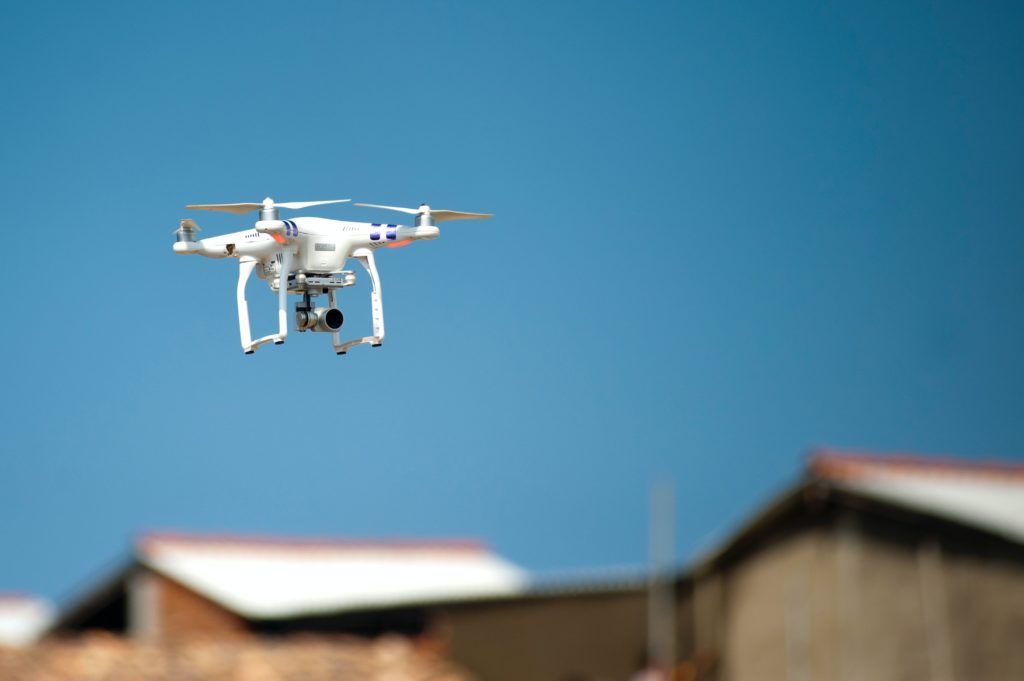The development of increasingly autonomous weapons transforms war scenarios and raises a number of ethical considerations that will need to be carefully evaluated.

That of drones is now an established and widespread technology, both for civilian uses and, and increasingly, for military uses. We see news of it every day from the front Russian–Ukrainianbut also in the Middle East where, in Iran's undeclared war against Israel, combat drones are increasingly being used on both sides. And even Tehran has been supplying it to the Putinian army on an ongoing basis for some time.
In military use, drones operate both individually and in groups or, better, in swarms. Recently a swarm of 130 drones took off in the skies of Cambridge, Massachusetts. The operator controlled them not from the classic desk with a joystick, but using an interface of reality virtual which lets you know what each individual drone observes. It is a disruptive technology developed for the Pentagon by the Raytheon company, which is working with Defense advanced research project agency (Darpa) in the Offset program. The team also created an interface that allows operators to issue voice commands to the swarm and act quickly while maintaining situational awareness.
The wars of the next few decades foresee one large amount of innovative factors: new technologies, new threats, the end of heavy weapons, the replacement, in some areas, of humans with drones, robots and cyborgs. A recent report of the National Security Commission on Artificial intelligence USA describes the power of artificial intelligence in transforming the way people fight and calls on the federal government to allocate more resources to the sector. A push necessary to face the advance of China and Russia, which are committed to developing autonomous weapons and investing significant resources in the research and development of those systems. Among the countries that should grow the most there are also the United Kingdom, which in its defense strategy declares to focus on robotics military, and Israel, which is already a leader in the production of autonomous weapons. It is therefore not surprising that globally there is talk of new arms race.
The advance of drones
At the end of 2020, Armenia and Azerbaijan fought the second war for possession of the Caucasian region of Nagorno Karabakh. And the drones do their part. In particular, a drone called Iai Heron, developed by the state-owned company Israel Aerospace Industries, which aim at a target to destroy it on impact. That is why they are known as kamikaze drones. In the last Nagorno-Karabakh war they were not only used for propaganda, but were one of the key aspects of the conflict. Azerbaijan spent large sums of money on the purchase of these sophisticated weapons and had 200 units of four different models; Armenia had only a small-scale, self-made production model. With the victory of Azerbaijan, the Nagorno-Karabakh conflict can be considered the first to be won even with the help of autonomous weapons.
Robots and robotic weapons
If drones advance, the lion's share goes to robotic weapons and the fighting robots themselves. There are remotely piloted aerial vehicles (UCAVs), but also tanks like the Russian Uran-9, unmanned warships like the US Sea Hunter.
Indeed, robotic weapons are becoming increasingly present alternatives in military strategies. Combat robots are potentially the most disruptive weapon, although at the moment they remain in an experimental phase. The vehicles are remotely controlled by soldiers through remote controls and sensors, but the goal could be to make them more and more autonomous from humans. For the first time, in September 2021 US Army soldiers fought in training against an "adversary" contingent that included robotic vehicles during a drill in Louisiana. Among the ranks of the infantry regiment were two eight-wheeled robotic combat vehicles, named Project Origin, designed to explore and fire on enemy positions in war. This is how ground combat will evolve over time, offloading the tactical risk for humans onto robots.
A burning issue
In recent years, the debate on how to manage potentially deadly artificial intelligence systems has assumed centrality. The use of robots in warfare is a particularly burning issue, which raises ethical and moral dilemmas. In a nutshell, supporters claim that such semi-autonomous or autonomous machines allow armies to protect their soldiers by reducing the loss of life. Critics fear this marks another dangerous step towardsreliance on robots the ability to decide on life and death. United Nations Secretary General António Guterres said: "The prospect of machines with discretion and the power to take away human life is morally repugnant."
The problems are potentially many and are not to be underestimated. They understand sensitive issues such as the inability of machines to explain their decisions, mistakes in making attacks (inability to distinguish between military and civilian) and the risk of ignoring the conventions of war. An idea shared by many is that the use of robot soldiers will lower the threshold for states to enter war, making future conflicts more likely.
According to some experts, artificial intelligence will inevitably come to make lethal decisions on the battlefield, implying the possibility of risks of potential malfunctions or errors. Once created, a technology will surely be used, and eventually the risk of giving machines control over lethal attacks will become real. This is what an American general put it: “You have created the technology, you have put processes in place to make it work, but then, to operate at the speed of war, you are essentially turning it on and trusting it. But a hyper-fast missile arriving on an aircraft carrier doesn't have time to track it, the commander doesn't have time to be in the decision-making cycle ». And, since humans don't have the ability to respond quickly enough, the decision will inevitably be left to robots.
The "upgraded" super soldiers
Among the potentially most surprising changes resulting from technological developments is the improvement of ability of individual soldiers to gather information, mobility and conflict resilience. The creation of the so-called "power soldier" is among the main medium-term future trends mentioned by the European Defense Agency in a document that gives some examples of enabling technologies (biological, cyber) that could lead to this goal. Among the technologies contemplated, the use of exoskeletons to increase physical strength, genetic alteration processes and nanotechnologies to improve cognitive abilities as well as drugs to enhance endurance.
Although the use of these technologies will be limited by the ethical and legal constraints, could increase individuals' ability to collect and process information, resist the effects of pathogens and chemical, biological, radiological and nuclear threats, and benefit from improved cognition, strength, speed and other capabilities.
The improvement of these characteristics, says the EDA, "may be necessary not only because of the spread of diseases through greater population movements and the potential effects of climate change, but also because of the possibility that technological proliferation could lead to hostile actors in possession of weapons ".
Other technologies that, according to the agency, could allow the forces of European states to operate in the future strategic environment are direct energy weapons (Dew), designed to damage long-range targets, such as radiofrequency laser weapons, which could prove to be effective "to counter swarms of self-piloted aircraft"; satellites and pseudo-satellites, which are extremely light aircraft powered by solar energy, capable of remaining in flight for months and providing prolonged, high-definition coverage of specific regions of the Earth; augmented virtual reality and new launch technologies to ensure European access to space.






